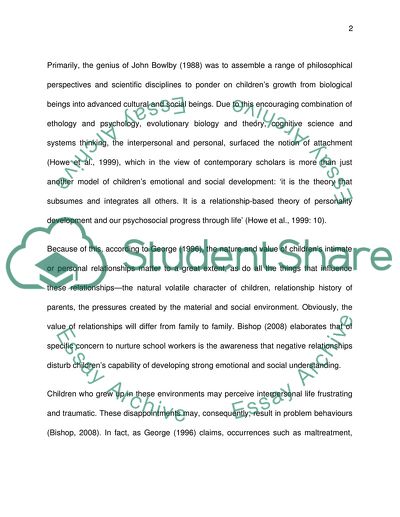Cite this document
(“The Importance and Implication of Early Attachment to Childrens Social Essay”, n.d.)
The Importance and Implication of Early Attachment to Childrens Social Essay. Retrieved from https://studentshare.org/education/1564081-with-reference-to-john-bowlbys-theories-discuss-the-development-and-significance-of-early-attachment-in-children-and-the-implications-for-theirplease-refer-to-referencing-requirements-ive-written-the-full-title-in-there
The Importance and Implication of Early Attachment to Childrens Social Essay. Retrieved from https://studentshare.org/education/1564081-with-reference-to-john-bowlbys-theories-discuss-the-development-and-significance-of-early-attachment-in-children-and-the-implications-for-theirplease-refer-to-referencing-requirements-ive-written-the-full-title-in-there
(The Importance and Implication of Early Attachment to Childrens Social Essay)
The Importance and Implication of Early Attachment to Childrens Social Essay. https://studentshare.org/education/1564081-with-reference-to-john-bowlbys-theories-discuss-the-development-and-significance-of-early-attachment-in-children-and-the-implications-for-theirplease-refer-to-referencing-requirements-ive-written-the-full-title-in-there.
The Importance and Implication of Early Attachment to Childrens Social Essay. https://studentshare.org/education/1564081-with-reference-to-john-bowlbys-theories-discuss-the-development-and-significance-of-early-attachment-in-children-and-the-implications-for-theirplease-refer-to-referencing-requirements-ive-written-the-full-title-in-there.
“The Importance and Implication of Early Attachment to Childrens Social Essay”, n.d. https://studentshare.org/education/1564081-with-reference-to-john-bowlbys-theories-discuss-the-development-and-significance-of-early-attachment-in-children-and-the-implications-for-theirplease-refer-to-referencing-requirements-ive-written-the-full-title-in-there.


